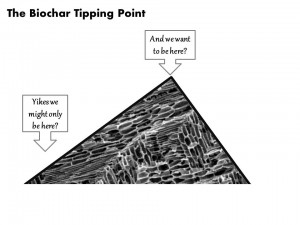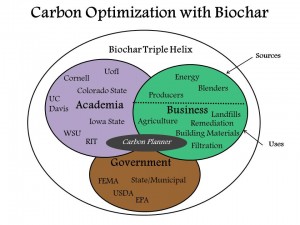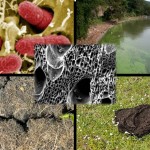There are a growing number of biochar production models emerging. No one really knows which ones will ultimately survive and thrive – but my guess and hope is that more than one model will be triple bottom line successful! So what does the evolving Char-o-sphere look like these days? I’m glad you asked…
First there are large scale biomass energy producers that generate biochar as a by-product of energy production. I think we will start to see more and more of these that are capable of creating an enormous amount of biochar. There is a delicate balance between optimizing generation of energy (e.g. bio-oils, syngas or thermal energy) and the yield and quality of the biochar. As I understand it, some of these producers are able to shift this balance as the markets for the different products changes.
Then we see a few producers emerging that are really more focused on the quality of the biochar versus the other co-products of biochar production. At the moment their market focus seems to be on the retail gardening market although there are other interesting niche market opportunities that are evolving in things like remediation. Some of these are beginning to expand in the US, while others are still fairly local or regional in focus. (I can’t say with any degree of authority, what is happening beyond the borders of the USofA, but certain countries are marching along at a much faster clip!)
A third model that is beginning to emerge is the livestock waste conversion biochar production model. Though this model solves the waste management issue in an environmentally friendly manner, there is the question of what to do with the resulting biochar that has posed some challenges as most large livestock producers don’t necessarily want to be selling biochar! [Ideally off-take agreements will be set up….but that may take a while to sort out.]
And then there is my favorite, the holy-grail IMHO: the closed loop biochar production model. In a nutshell, this is the model where the farmer or grower converts their own organic waste into biochar and then uses the char on-site. Why is this so compelling and why will this go the furthest in terms of making Mother Earth happy? First, in line with Wendell Berry’s ‘solving for pattern’ thinking, this mode of production addresses multiple problems in tandem such as waste management, depleted soils, nutrient leaching, etc. Second, this type of production environment involves minimal transportation and therefore maximum carbon sequestration! Ultimately I think this is the model that could be most affordable for farmers as well…but time will tell!







